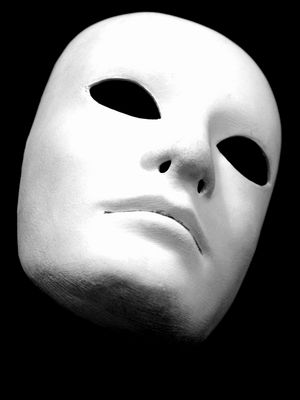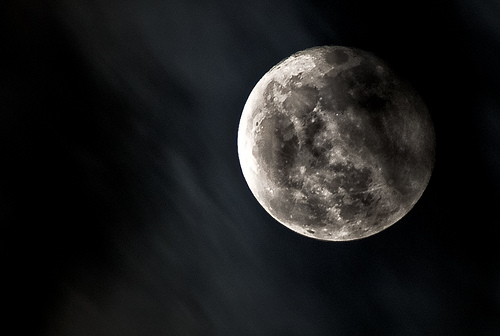 |
| Brief plan of mise en scene |
Mise-en-scene is the french term meaning of the arrangement of everything that appears in the framing.In simple terms miss-en-scene is everything the audience sees, there are five elements setting & iconography ,costume (hair and makeup), colour, lighting and body language & facial expressions and positioning. Mise-en-scene is very important within a film as it makes the scene more interesting to watch, also helps the audience have more of an understanding of what is going on. Planning the elements of Mise-en-scene will be very efficient as it will help me and my group communicate the different ideas we would like to consider in our thriller. Also because of the huge impact mise-en-scene has on a film, we will need to be prepared and organised of what were doing whilst filming or it would be quite chaotic and this could result of us not producing the best thriller opening scene we can.
Setting & Iconography
 |
| Forest |
In our thriller sequence, we have all decided to include two main locations that'll support the scene. The first setting would be of the street as the antagonist is laying on the road. I chose this because of the uniqueness and strange aspect, this gets the audience questioning his purpose of laying there. The fact that he is laying in the middle of road shows that he is fearless and likes to take risks, this suggests that he can be a powerful character because of his lack of caring for his safety. Also, in the part where the girls are walking down the pavement, this makes the audience relate to them as it is seen as realistic making them feel more tensed as they think that whatever happens to the victims could happen to them. The second setting I will be using would be a forest, me and
my group members concluded that this will be a perfect location to shoot the chase scene. As a forest is a gloomy place because of its lurking tree's and narrow pathways, we believed that this would be essential to include as the claustrophobic atmosphere will also make the scene more tensed as it seems like theres no way out. In addition, this is conventional to a thriller because of the darkness of the isolated surroundings this will emphasise and mirror the fact that something dark is going to be in the forest that'll stop the girls escape and no one will help her as forests are quite big to explore in.
 |
| White Mask |
The iconography I will be including in my thriller would be of a white mask. We chose to use a white mask because it contrasts his clothing which emphasises the the use of his hidden identity and that he is more alive when the mask is on. This also establishes to the audience that he is the antagonist and he shouldn't be trusted because he cannot even show his identity when he is in the forest. The reason why in the beginning when he is laying on the floor he is not wearing his mask, but it'll be next to him is to draw the attention of the victims. If he was to be laying on the floor wearing his mask, no one would approach him as it is kind of strange. But we decided if he was to just only wear his mask when he is actually chasing after his victim this will suggest that he uses the mask as a trap to pull the protagonists in.
Furthermore because we are including a flashback in our opening, the setting of this will be at a park because the little boy will be sitting on the swing. We chose this because parks are seen as places of happiness and joy specially for children as they play in there, however the little boy shown will look quite depressed.
Costumes & Make up
 |
| Dark clothing |
The costumes which I will use for the two girls is that they're dressed in dresses and heels as they are coming from a night out as its one of their birthdays. This exaggerates their vulnerability as they're not sober and not fully aware of what they're doing making them an easy target for the antagonist to kill them. In contrast, the boy will bed dressed in informal, scruffy dark clothing to represent his lack of life inside of him and that he is evil and dangerous. As his clothing is dark, he would almost be camouflaged to the dark setting as the lighting will be low-key because this will be shot in the evening. This suggests he would be hard to find creating suspense and tension when it comes to the chase scene. As the girls are coming from a night out, they're make up will be quite outgoing to show that they've come from an informal event. This will make the audience relate to them and sympathies with them because they have just been having a really nice time and now they're going to be apart of a unfortunate situation because this is a thriller. Also, I will be using fake blood to convey the injuries that have occurred on the victims due to the antagonists actions. As Ella is quite artistic, she will also add some bruises made from makeup to exaggerate the killing of the antagonist.
Facial expressions and body language
The importance of having valid facial expressions and body language in my scene is that because it'll enhance the scene to be more realistic so that the audience can build a relationship or relate to the characters. When the antagonist is laying on the road, his facial expressions and body language would be dead like as if he was spared out and not engage of what is going on around with him. This is will exaggerate his out place in the setting and that he is quite abnormal. The audience will feel curious of why he is not moving and why he is laying still creating suspense when the protagonist walks over to him because they do not know what he may be capable of and if he is sane. However, contrasting the antagonist, the two girls will have cheerful, happy facial expressions so they'll be smiling and laughing about their night out. They're body language will be quite unsteady as they have been drinking so they're lack of stability may worry the audience and sympathies them as they are in a vulnerable state. This is conventional to a thriller as the victims are usually seen as fully of life and quite adventurous however the suspect antagonist may look reserved and alone.In our flashback, even though we do not see the little boy's face as his back is turned to the camera, his body language will be slouchy with suggests that this little boy is not happy. This is conventional to a thriller as it'll make the audience question why he looks upset making them build a closer relationship with him as children are innocent and young.
Lighting & Colour
 |
| Night time - Black, gloomy |
The lighting we will be using in our thriller scene will be low-key lighting because the major setting will be shot in the evening. As it will be low key lighting this will make it harder for the audience and the victims to see whats around them, creating suspense and enigma as they do not know what may happen. Also this will magnify the deserted area the characters are located meaning that if anything was to happen to them, no one would be able to help the victims quickly. The colours that I will be using are dark colours e.g black, brown. These colours will be what the antagonist is wearing showing how dark his personality is and how he has no emotion or feelings towards his victims. This is conventional to a thriller because the use of the colours helps the antagonist not be seen in the scene as he almost camouflages with the dark setting. However in the flashback we will use a filter which will be black and white to establish to the audience that this is not in the present day. We picked the colours black and white because they're both bland simple colours. Even though the white represents life,light, goodness, innocence when it is used with the colour black which associates with death,night,power and mystery, the two together confuses the audience and makes the think whether the flashback is a good or bad one. This is conventional to a thriller as the colours help build the suspense in the audience because they're unaware of whats going to happen so it'll provoke the shock element when they finally do see the point of the black and white filter.
Positioning of the characters
Positioning within a drama is a key convention of mise-en-scne as it draws out attention to an important character or object e.g photographer may use positioning to show relationships between people. In my sequence there will be a various number of positioning that my characters will be in to help convey the narrative more interestingly. Firstly, at the beginning the antagonist will be positioned in the middle of the road laying down, this will create suspense as it is quite abnormal to be laying on a road. Secondly in the flashback showing the little boy on the swing, he will be positioned in the middle of the frame, this will emphasise the fact that he is alone. This is conventional to a thriller especially when they include children in the scene as it creates suspense and tension because it makes the audience wonder why a child is alone in the first place. It also makes the audience feel on edge as they do not know what the child might do next as he is just sitting there on the swing. Lastly, at the end of the scene it'll show the girl who has tripped over and fallen onto the ground in the forest looking up ahead of her pathway looking at the antagonist who is standing further away but in her way. The different levels that the two characters in show how powerful the antagonist in the situation and how weak the victim is and she is looking up to him. This will create tension and enigma because the girl is injured and is on the floor but the boy is standing right in front of her, this makes the audience feel tensed and build a closer relationship with her as they do not know how the girl is going to escape as she is in a vulnerable position, sympathising with her. This is conventional to a thriller because it shows the different power statuses between the antagonist and his victims which makes the audience kind of lose hope of the victims getting away.
Planning for the mise-en-scene that me and my group will include in our thriller sequence was helpful as it allowed us to share and conclude the final elements that'll use to make our opening scene successful and conventional to the thriller genre. Mise-en-scene we have decided to include will help create emotions within the audience as it highlights and shows how the characters are feeling and where they are which makes them engage more to the film. I believe that the elements of mise-en-scene we have selected are conventional to a thriller as they help build all the aspects together to create an apprehensive, tensed thriller opening. Also the audience can relate to them making them put themselves in the characters shoes increasing the fear they're feeling which is the whole purpose of a thriller.












.jpg)














